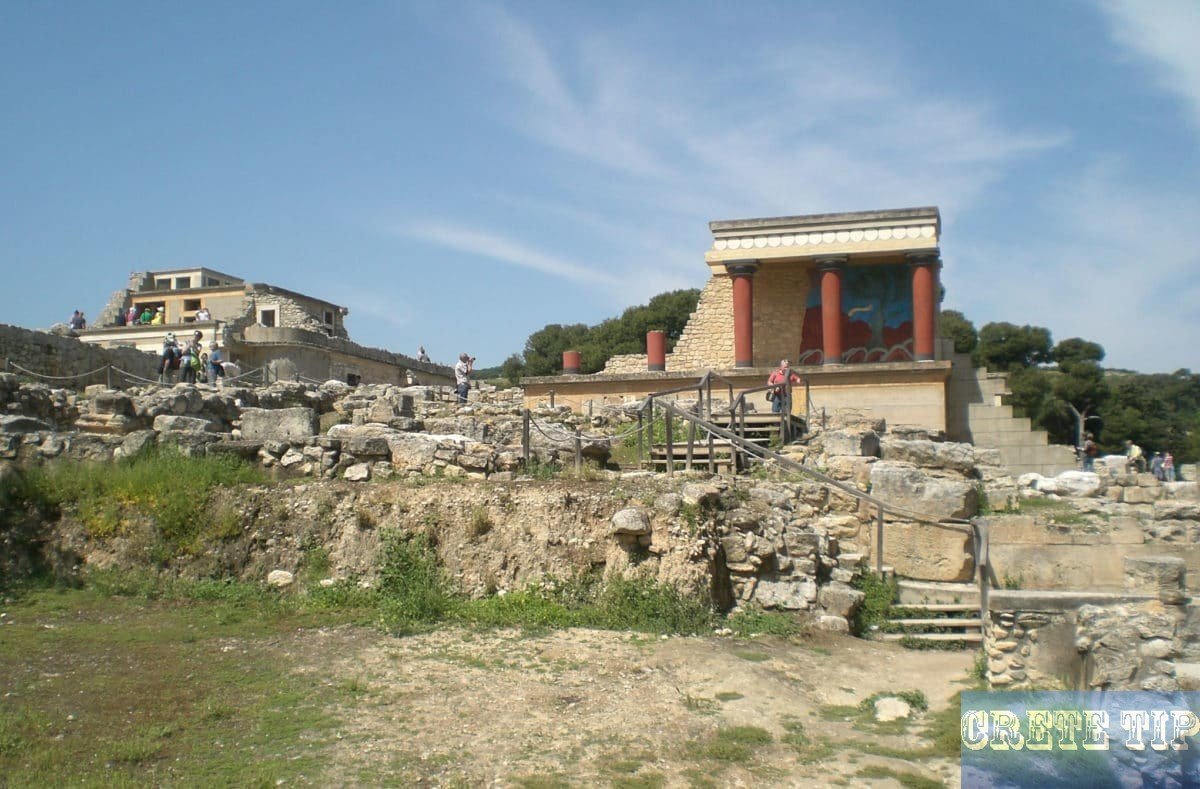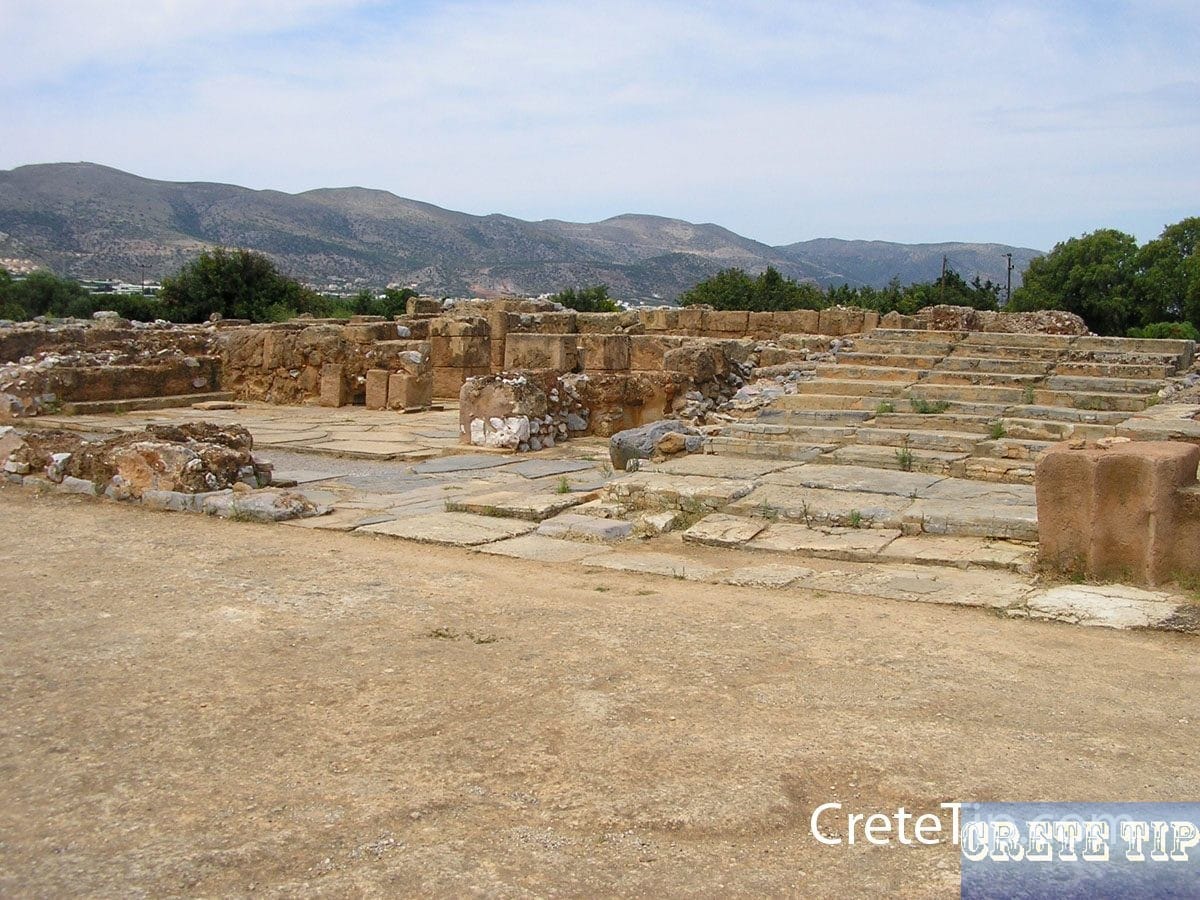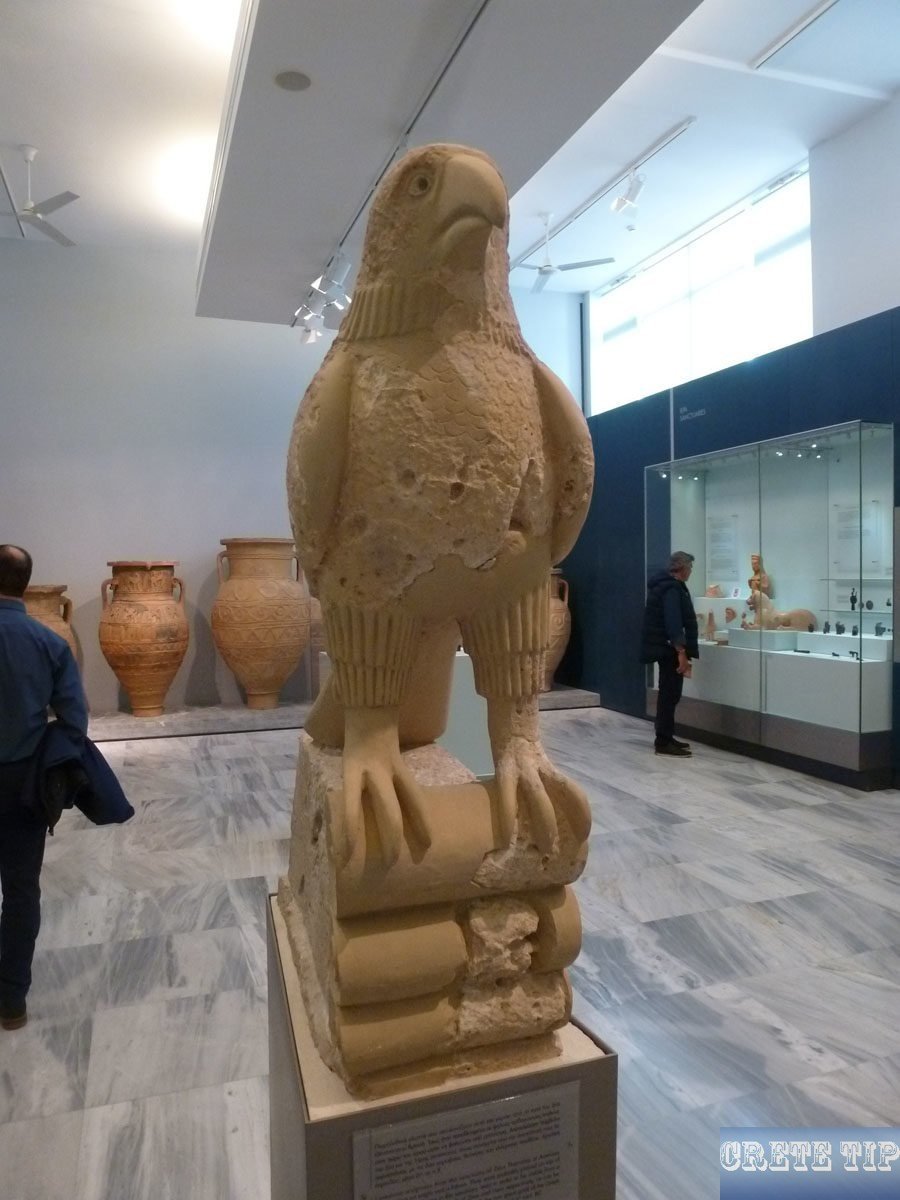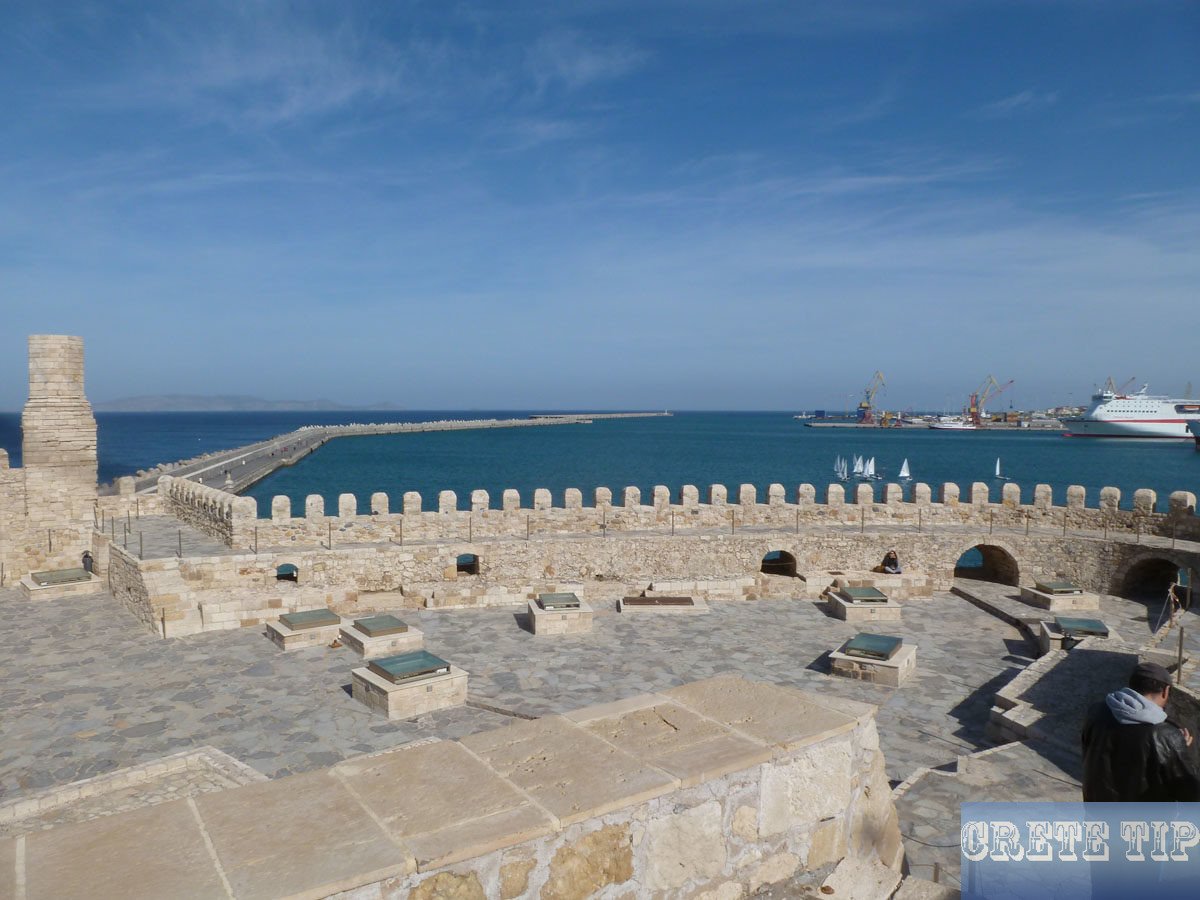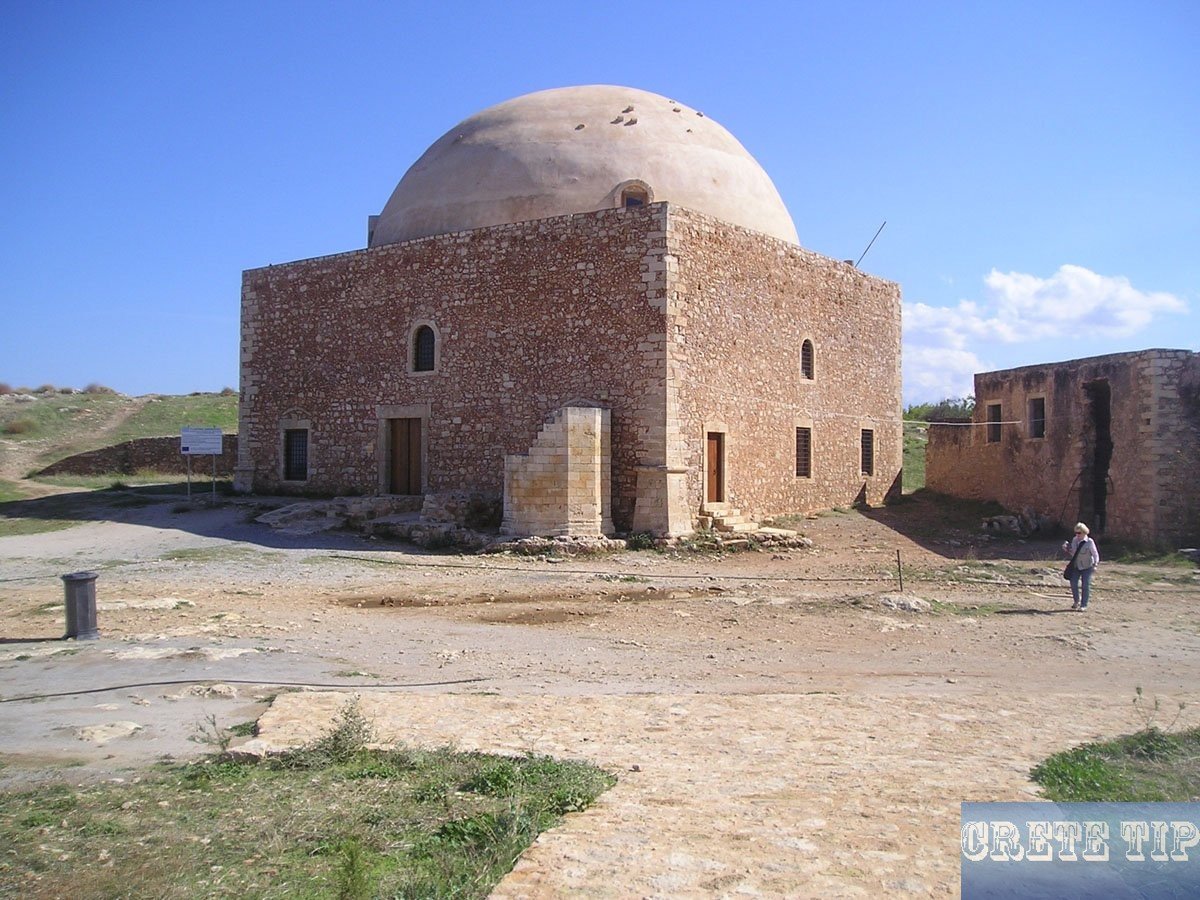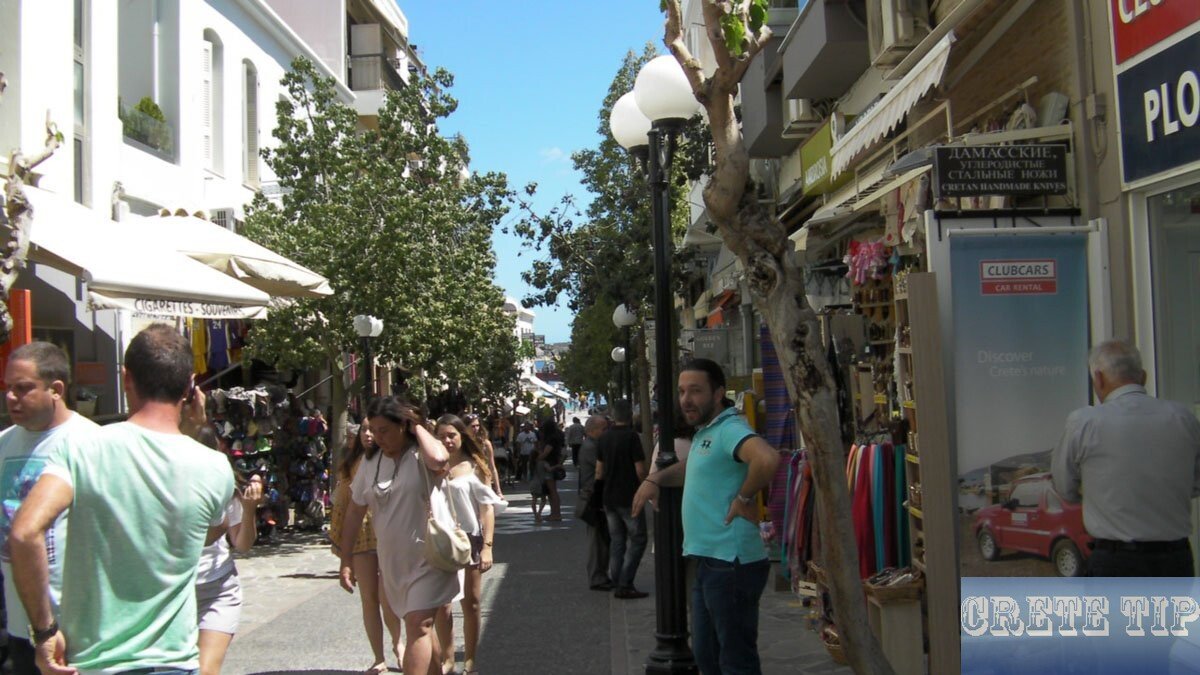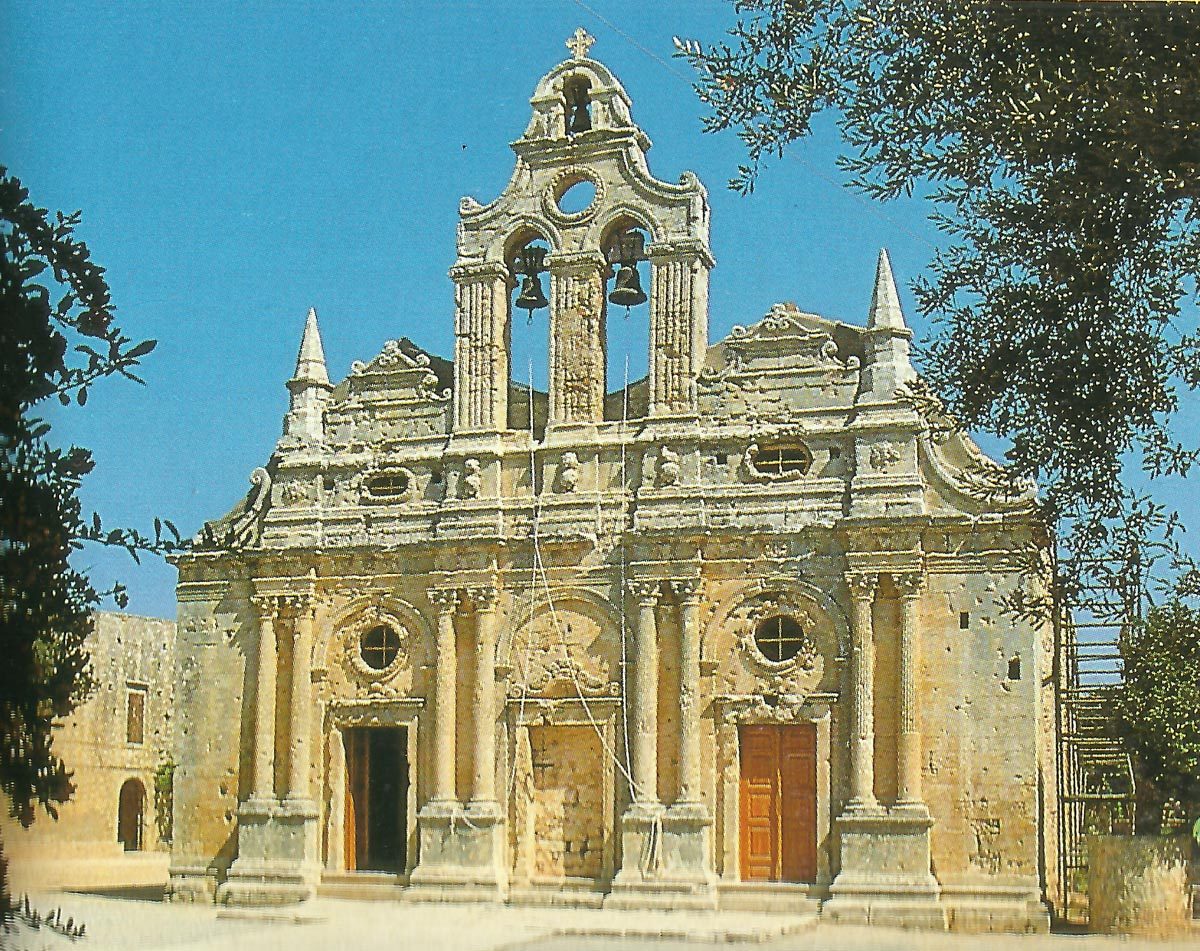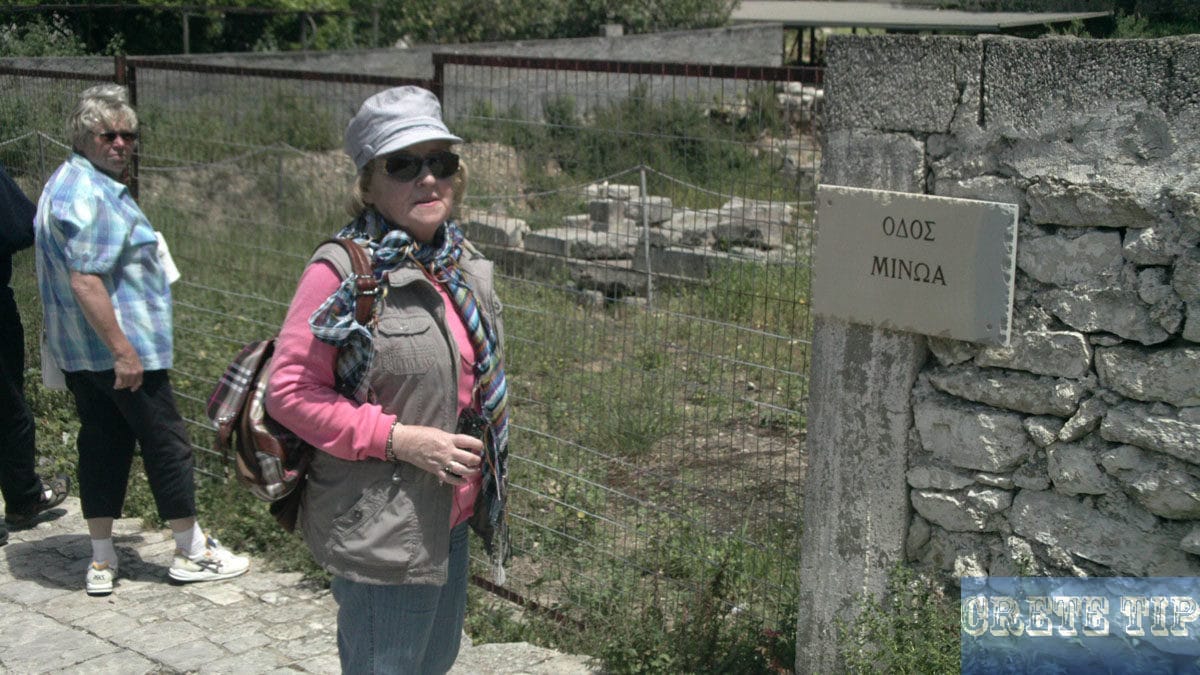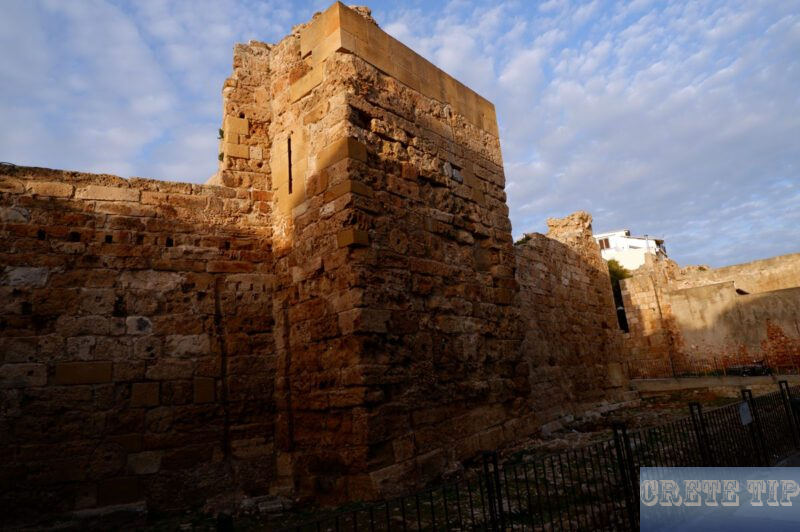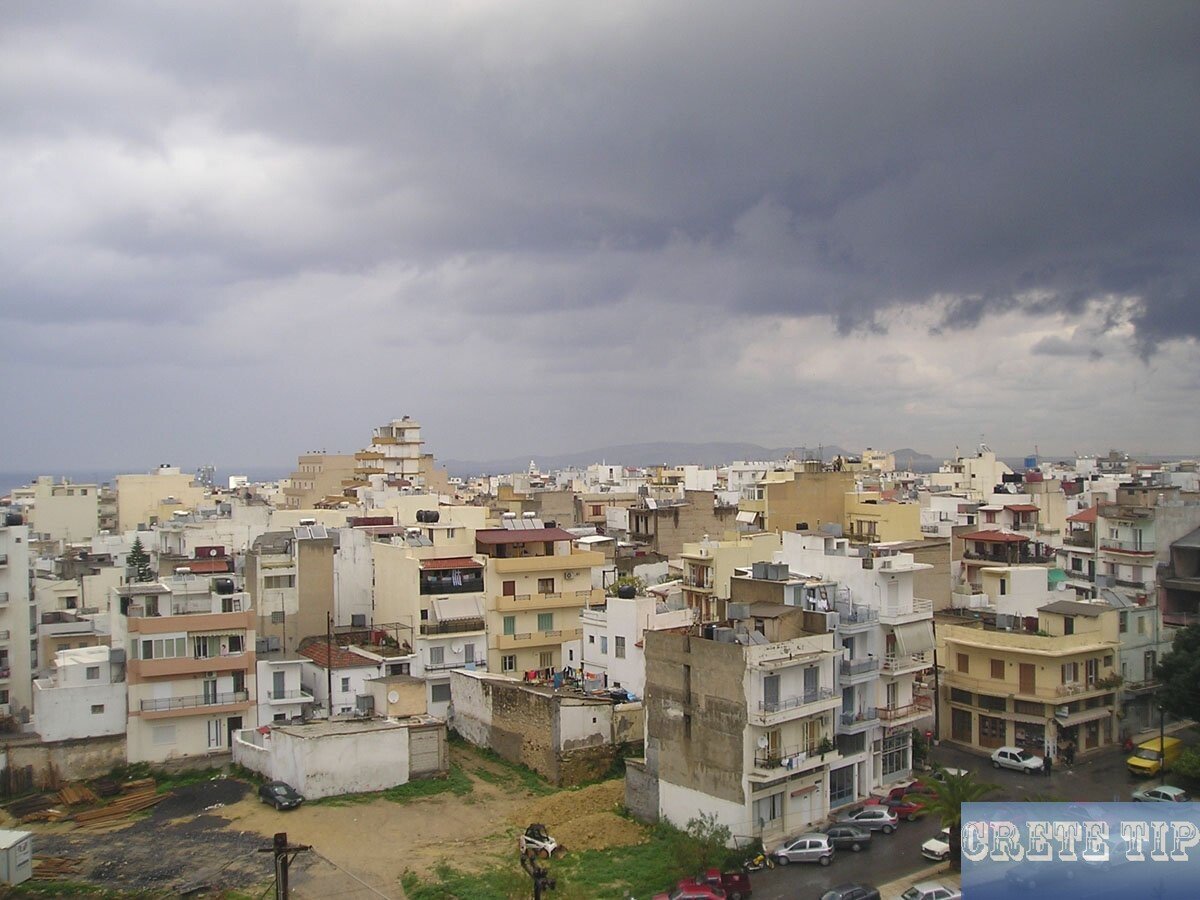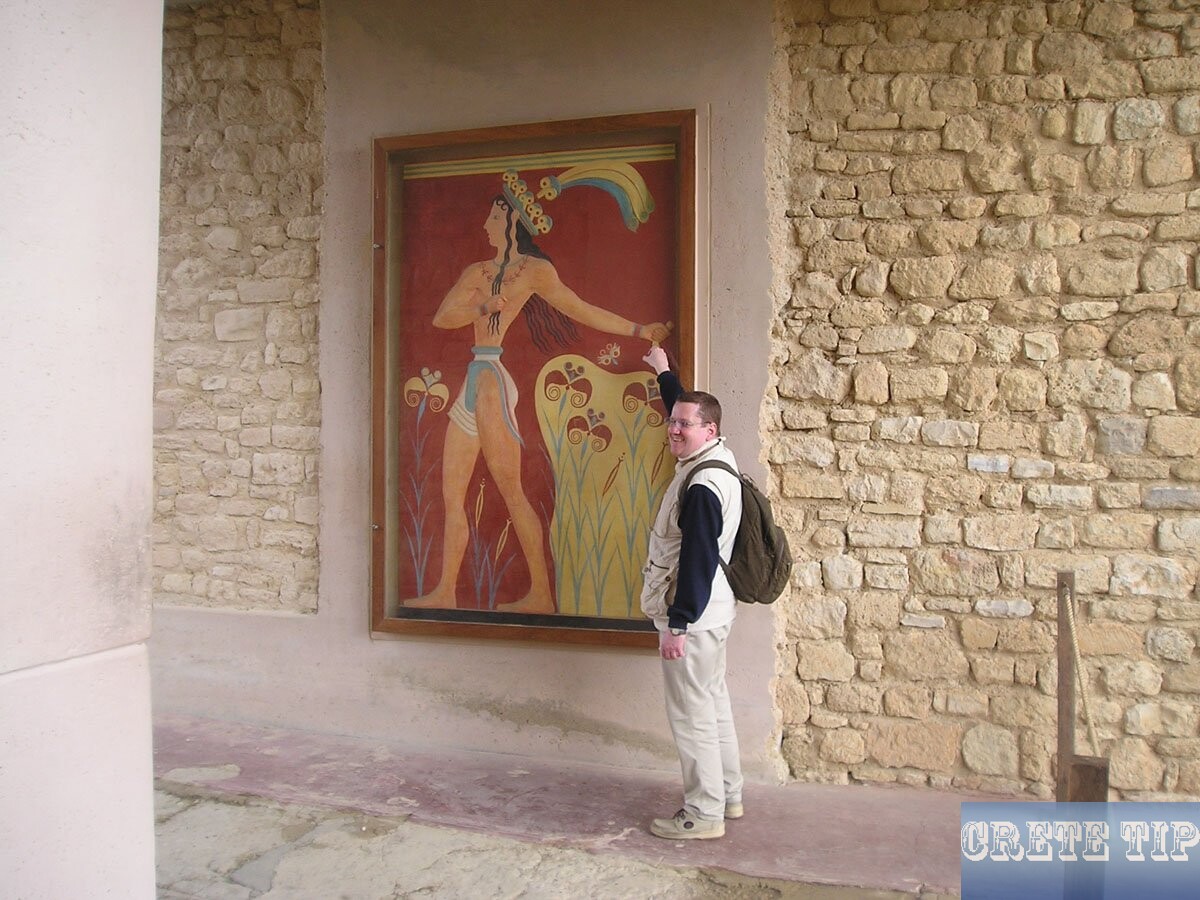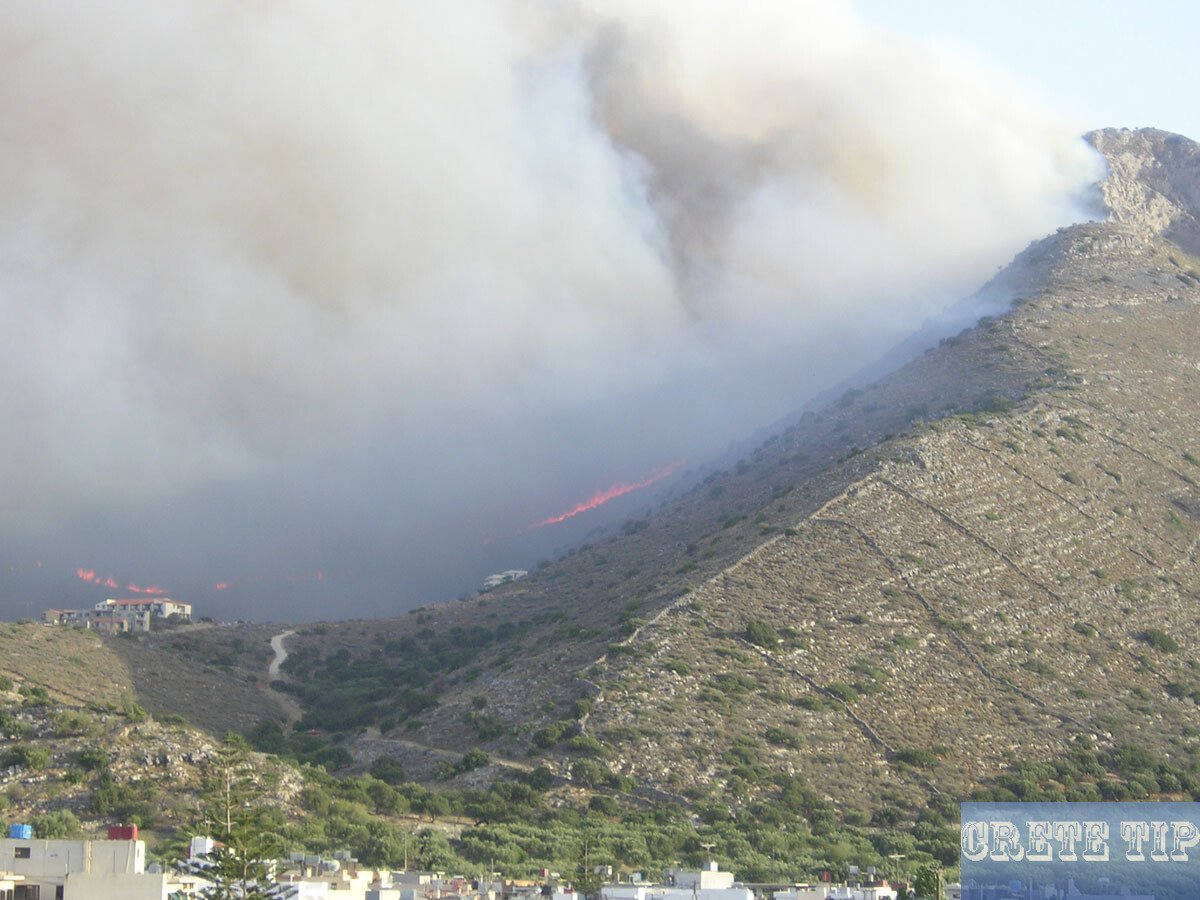The history of Crete (Part I) from the Palaeolithic Period, through the Neolithic (6,100-2,700 BC) to the Prepalatial Period during the Bronze Age.
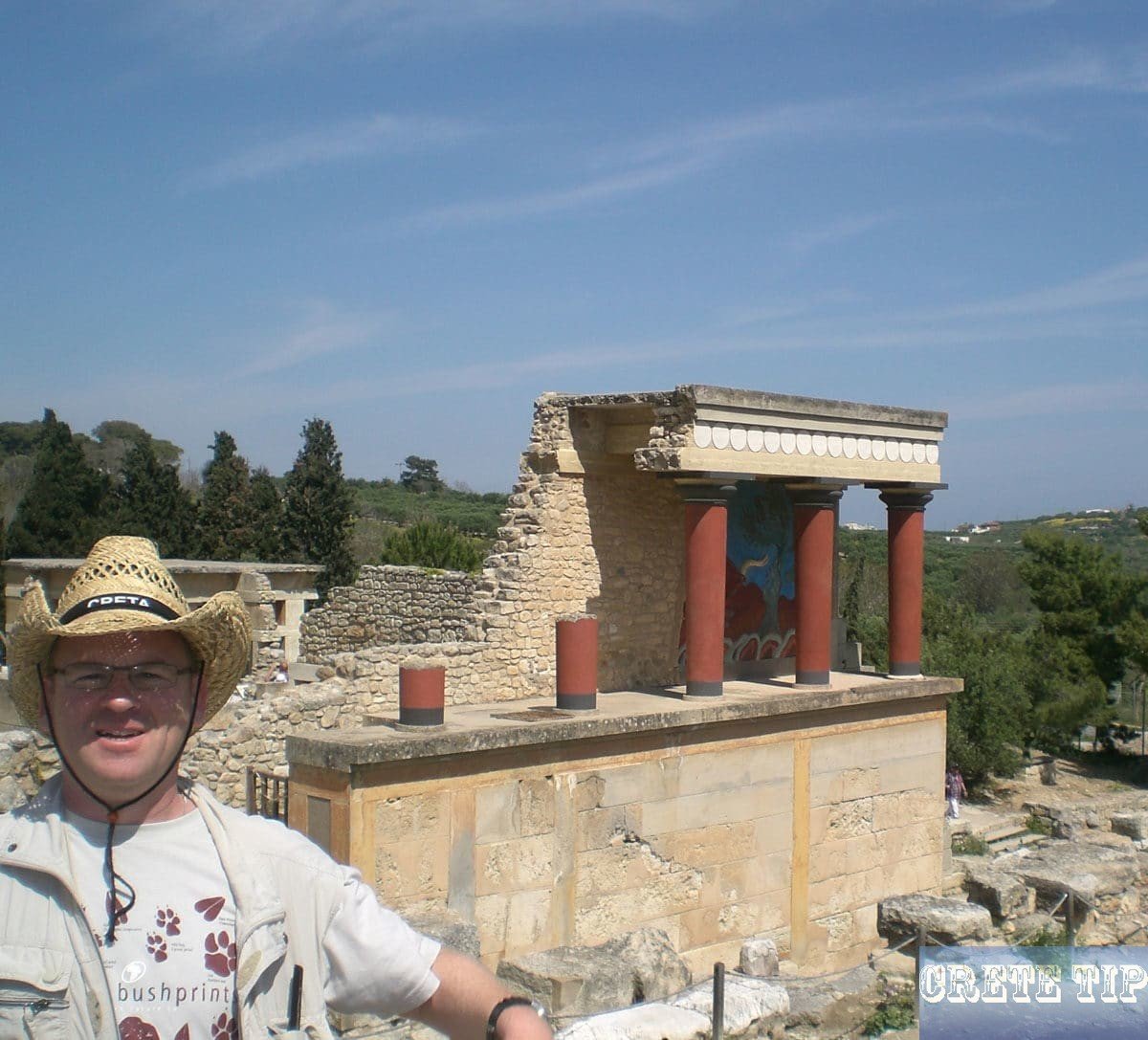
Crete, the largest Greek island, has a rich and complex history spanning thousands of years. Here’s a brief overview of Crete’s history:
Minoan Civilization (c. 3000-1100 BCE):
– The first advanced European civilization
– Known for its palatial centers, such as Knossos and Phaistos
– Developed a writing system (Linear A)
– Declined due to natural disasters and possible invasions
Mycenaean Period (c. 1400-1100 BCE):
– Mycenaean Greeks from mainland Greece gained control
– Linear B script introduced
Dark Ages and Archaic Period (c. 1100-500 BCE):
– Dorian invasions and settlements
– Formation of city-states
Classical and Hellenistic Periods (500-67 BCE):
– Crete remained relatively isolated from mainland Greek affairs
– Internal conflicts between city-states
Roman Period (67 BCE-395 CE):
– Roman conquest and rule
– Christianity introduced
Byzantine Period (395-823 CE):
– Part of the Eastern Roman Empire
– Arab raids and eventual conquest
Arab Rule (823-961 CE):
– Crete becomes an Emirate
Second Byzantine Period (961-1204):
– Reconquest by Byzantium
– Economic and cultural revival
Venetian Rule (1204-1669):
– Extensive fortifications built
– Cultural and economic flourishing
Ottoman Rule (1669-1898):
– Ottoman conquest after long siege of Candia (Heraklion)
– Cretan revolts against Ottoman rule
Cretan State (1898-1913):
– Autonomous state under Ottoman suzerainty and Great Power protection
Modern Greece (1913-present):
– Union with Greece
– German occupation during World War II
– Important role in Greek tourism and agriculture
Throughout its history, Crete has been a crossroads of civilizations, influenced by various cultures while maintaining its distinct identity. The island’s strategic location in the Mediterranean has made it a coveted possession for many empires and contributed to its rich cultural heritage.
Individual reports on the history of Crete
The History of Crete
The discovery of Minoan civilization in Crete has led to the suppression of every other aspect of its long history. In fact, it is difficult for any other age of its history to compete with the first real civilization on European soil.
But the leap in civilization by the Minoans was no coincidence, because Crete is so centrally located in the eastern Mediterranean that the already developed cultures of the east and south could meet the influences of the west and north. This is why the first ‘western culture’ emerged here, which became the starting point for classical Greece and the Roman Empire.
Therefore, due to its strategic position in the Mediterranean Sea, the island has often played a more important role in history than its inhabitants might have wished.
Greek writers of classical ancient times handed down the first information about Crete. Homer mentions that Minos, son of Zeus and Europa, consulted with his father, who taught him the law and renewed his kingdom every nine years. Minos was just and wise and together with his brother Radamanthys he banished souls to the underworld. Here the island is mentioned for the first time as ‘Crete’.
Greek legend speaks of the great naval power of a mighty king in Knossos. Thucydides also mentions that a thalassocracy cleansed the sea of Carian pirates. A legend from Athens tells about Theseus and the Minotaur and Diodorus writes about Minos as he chases Daidalus to Sicily to punish him.
Greek and foreign archaeological schools have revealed the evolution of life and the different phases of Minoan civilization in Crete after excavations that lasted practically a century. This civilization did not exist far from the area where Egyptian civilization originated, alongside the long-established flourishing civilizations of the Near East. It was the first major civilization on the European continent that developed there along with its culture and art.
The chronology, from prehistory to the history of Crete, is divided into sections according to the materials used during this period to make weapons, tools and various other items.
The step from the Stone Age to the Bronze Age was the most significant and the important researcher for this period, Evans, the founder of Minoan archaeology, called the result the ‘Minoan civilization’.
Using a chronology system based on the evolution of ceramic styles, he divided this age into three major periods: Early Minoan (EM), Middle Minoan (MM) and Late Minoan (LM), each divided into three phases (I, II, III).
Professor N Platon, another important researcher, proposed another system of chronology based on the most important events and, after the Stone Age, on whether there were palaces or not. He called this the Prepalatial period, the Protopalatial, the Neopalatial period and the Postpalatial period and divided each of them into three phases. This newer system of chronology is common in science today and is used here.
Palaeolithic Age
Until recently, the first clear traces of a human presence on the island, confirmed by archaeological research, date back to the pre-pottery period during the transition to the Neolithic.
But scientific research in the 1960s discovered traces of human activity on the island that may date back to the Palaeolithic, 8,000 BC or earlier.
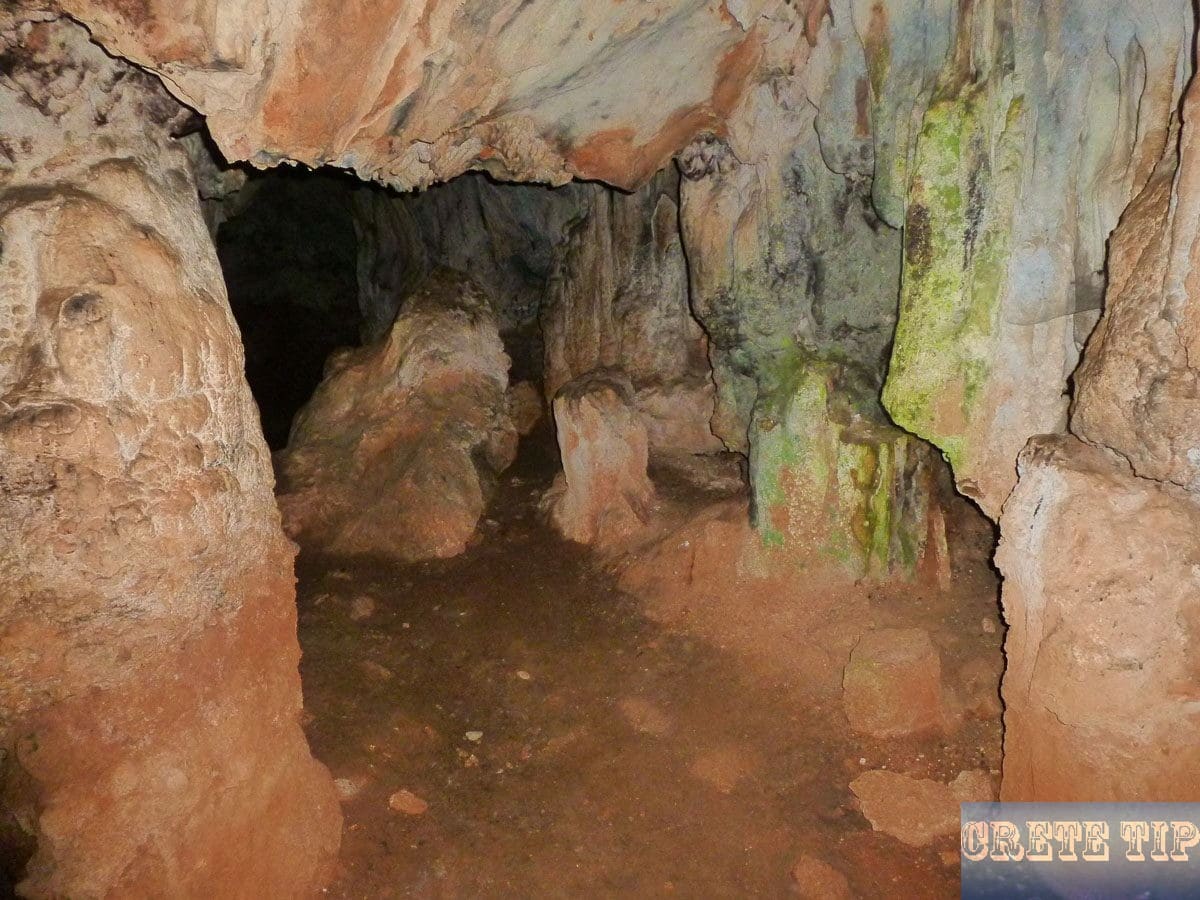
The first inhabitants of Crete, Neolithic cave dwellers, apparently reached the island before 7,000 BC.
They most probably came from Asia Minor or less likely from Syria, Palestine or North Africa and brought with them the foundations of Stone Age culture – tools made of wood, stone and bone, raw pottery and simple cloth.
During this period some caves on Crete were temporarily inhabited, with the dead buried at the rear.
The development over the next three thousand years was almost imperceptibly slow, but progress was made gradually, whether by new immigration and its influences or by dynamics on the island itself.
Neolithic Age (6,100-2,700 BC)
The most important information from this period comes from the settlement of Knossos, one of the most important settlements in the eastern Mediterranean and in Europe, which was uncovered under and around the Minoan palace.
From the beginning, the Neolithic inhabitants tried to create a permanent settlement with an organized social life in houses made of bricks, twigs and clay mortar. At the same time they also used caves.
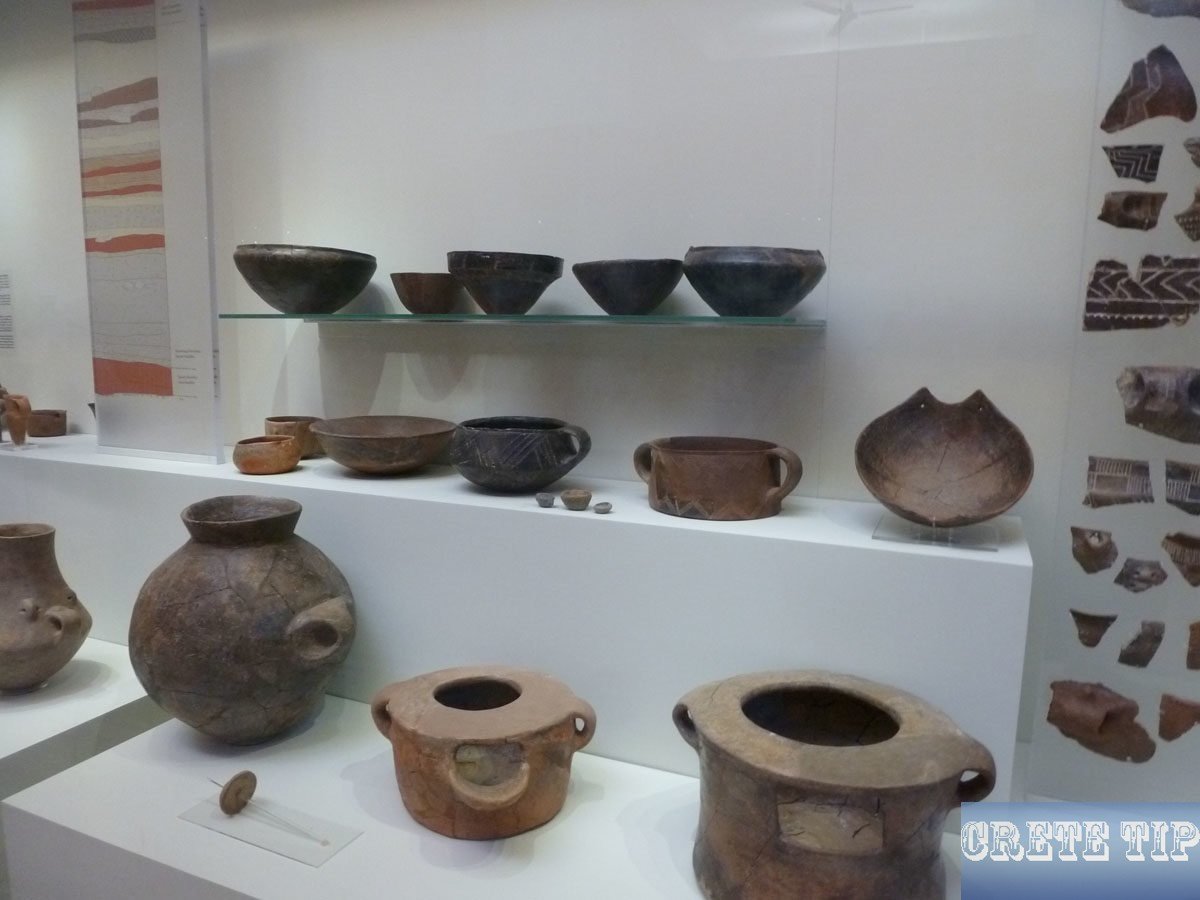
They were engaged in agriculture, animal husbandry and fishing, with the work being divided between men and women. Their civilization came into being at a time when they had common cultural links with the Neolithic civilizations of the East and Greece. Very quickly, however, it deviated from these and its own forms emerged.
The people of the Neolithic Age used weapons and tools made of stones and bones and made clay pots and figures. At the end of the period, the houses at Knossos consisted of more than one room and with pebble stoves in an organized settlement. Pottery was made and small clay and stone figures were made. The oldest examples of pottery were found near Knossos.
But there is only fragmentary information about the social and religious organization. The family, in its rudimentary form, must have formed the basis of the settlements. If there were leaders, they were the elders or the religious head.
New settlements from the Middle Neolithic (3,800-3,500 BC) were discovered near Gortys, Magasa, Sitia and Katsambas – near Heraklion.
During the Late Neolithic (3,500-2,700 B.C.) there were settlements on almost the entire island and the houses were constantly used. The pottery became easier and the surfaces were polished. Found obsidian and ivory testify to Crete’s trade relations with the Cyclades and the East.
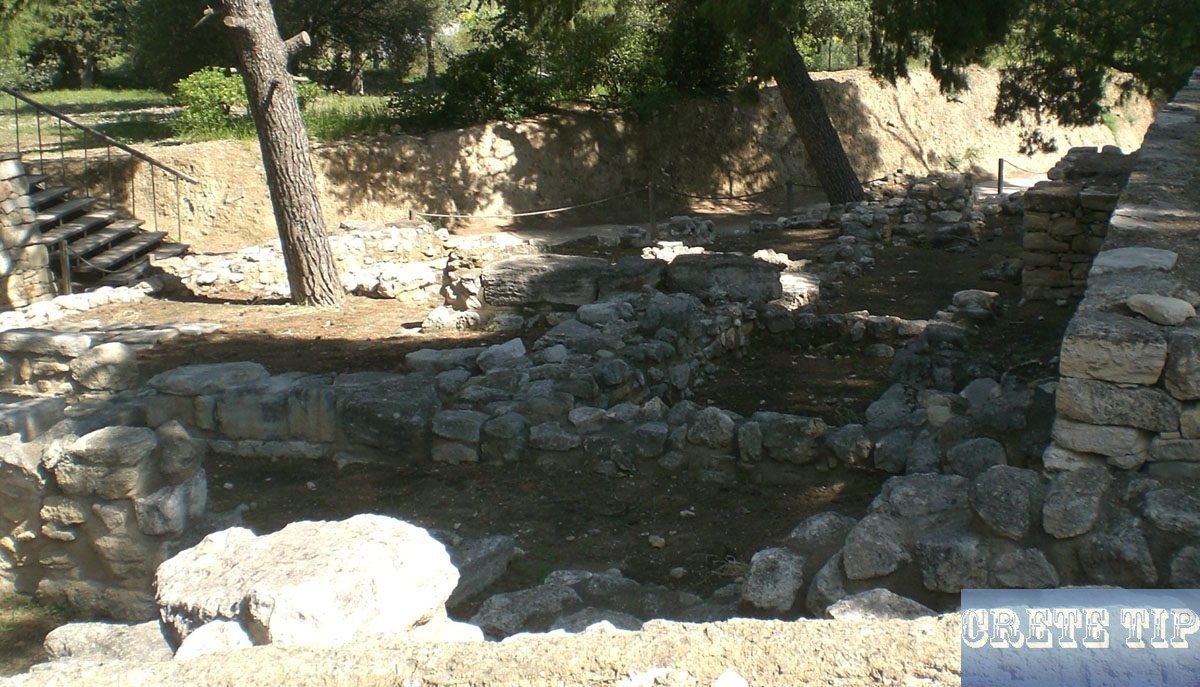
Around 3,000 B.C. the settlement of Knossos had reached a size of about 30,000 sq yd (25,000 m²). At the end of the Neolithic the houses there stood on strong foundations with strong walls and every household had courtyard walls, stoves, pebble floors and benches.
Bronze Age
Prepalatial period (2,600-1,900 BC)
The first bronze objects were found in subneolithic layers from the middle of the third millennium BC during the Neolithic period.
This proves that the inhabitants of Crete at that time already knew metals and their processing, although the stone was still used as work material for a long time, until it was finally abandoned.
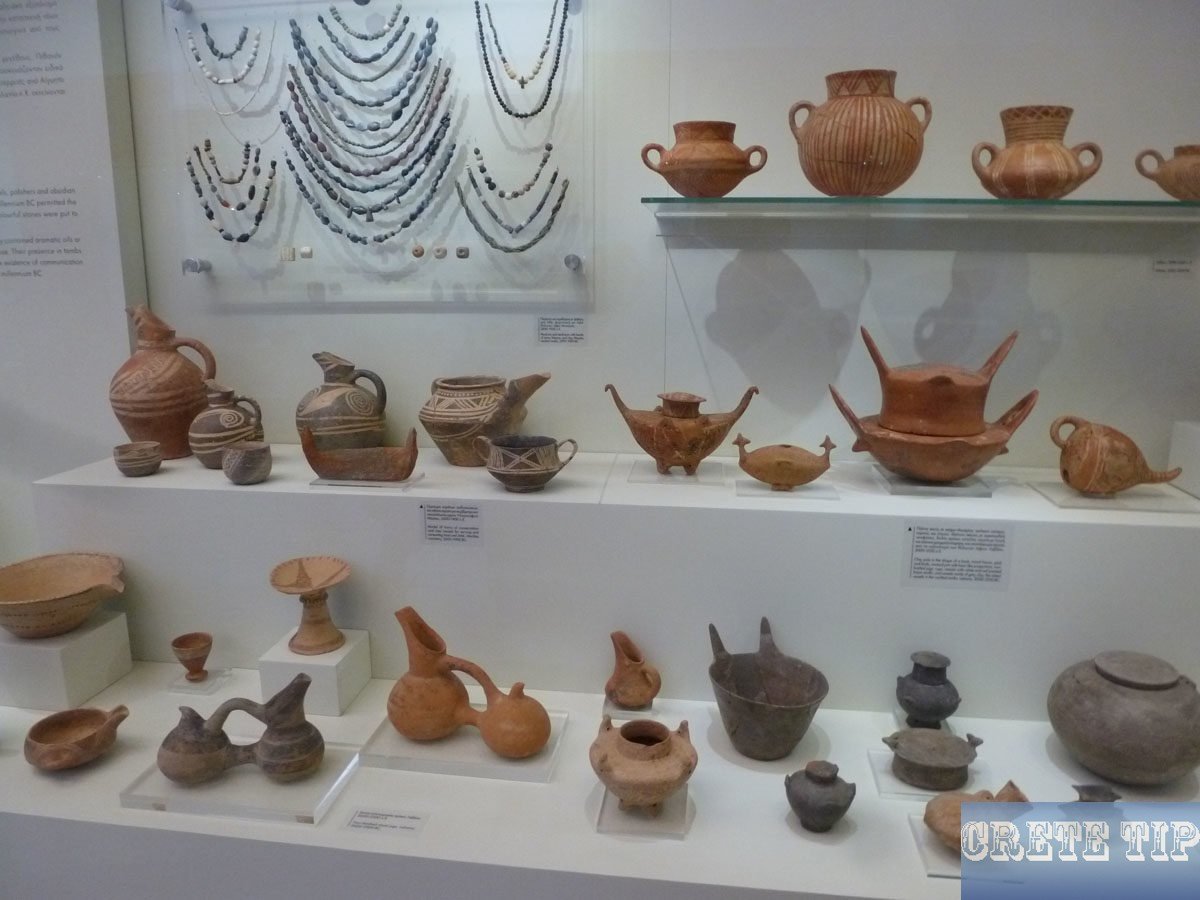
In the centuries before 2,600 B.C. important changes took place on the island and thereafter there was rapid progress in virtually all areas of human life. Villages and towns emerged where there had previously been only isolated settlements. For the first time, new settlements were built on the coast and near natural harbors.
It is quite likely that these rapid changes were caused by a new wave of immigration from the East. These people brought with them the knowledge of agriculture, pottery and above all seafaring and trade. Thus, for the first time, the products olives and wine also appeared.
The first two centuries of the Prepalatial period from 2,600 to 2,400 BC are called the Sub-Neolithic. This was a transitional period, as the pottery finds show.
The Neolithic styles developed into the Pyrgos, Ayios Onouphrios and Levina styles. The vases were fired in closed ovens. Not many examples of these works have survived, but the Neolithic building techniques must have been continued, as well as the habitation of caves, as well as huts. The dead were buried in caves, while the round Tholosic graves (dome graves) occurred at the same time.
The second phase of the Prepalatial period from 2,400 to 2,100 BC is the most important for the development of civilization.
Important finds from the settlements of Vasiliki and Myrtos in the area of Ierapetra have been excavated, showing the changes in lifestyle and progress in construction.
Dome tombs have been found in various places in the Mesara plain and, to a limited extent, in other parts of Crete. These graves are free-standing spaces for the burial of many families or generations. In Eastern Crete, the burials took place in small, enclosed complexes with two adjacent rooms or in small, clay vessels and small, loamy rectangular or elliptical coffins.
Primitive pottery discs appeared for the first time, so that the styles of the coming age could be developed. Vasiliki was a new style from the region of the same name. But what really stands out from this period are the poly-chrome stone vases made of soft or hard multicolored stones with artistic design and a wonderful utilization of the veins.
There are other artistic trends and examples from the tombs of Mochlos and Mesara, where gold jewelry was found inlaid as well as filigree and granulated works. Small figures, seals of ivory and soapstone in a great variety of shapes appeared in the miniature works.
In the last two centuries, between 2,100 and 1,900 BC, new settlements were built and population shifts occurred. The burial architecture remained unchanged and there was a development and modification of the pottery styles from the previous phase, with a reduction in the number of stone vessels. There were also some improvements in miniature jewelry. The seal sculptures were extended by many forms and fascinating themes, and at the end of the period a kind of writing combined with the painted representations appeared on the seals for the first time.
These seals were used to certify the authenticity of the first documents, but above all to seal boxes, parcels and doors as a sign that they had not been opened without authorization. Therefore, as a deterrent, these seals were often in the form of scorpions or poisonous spiders.
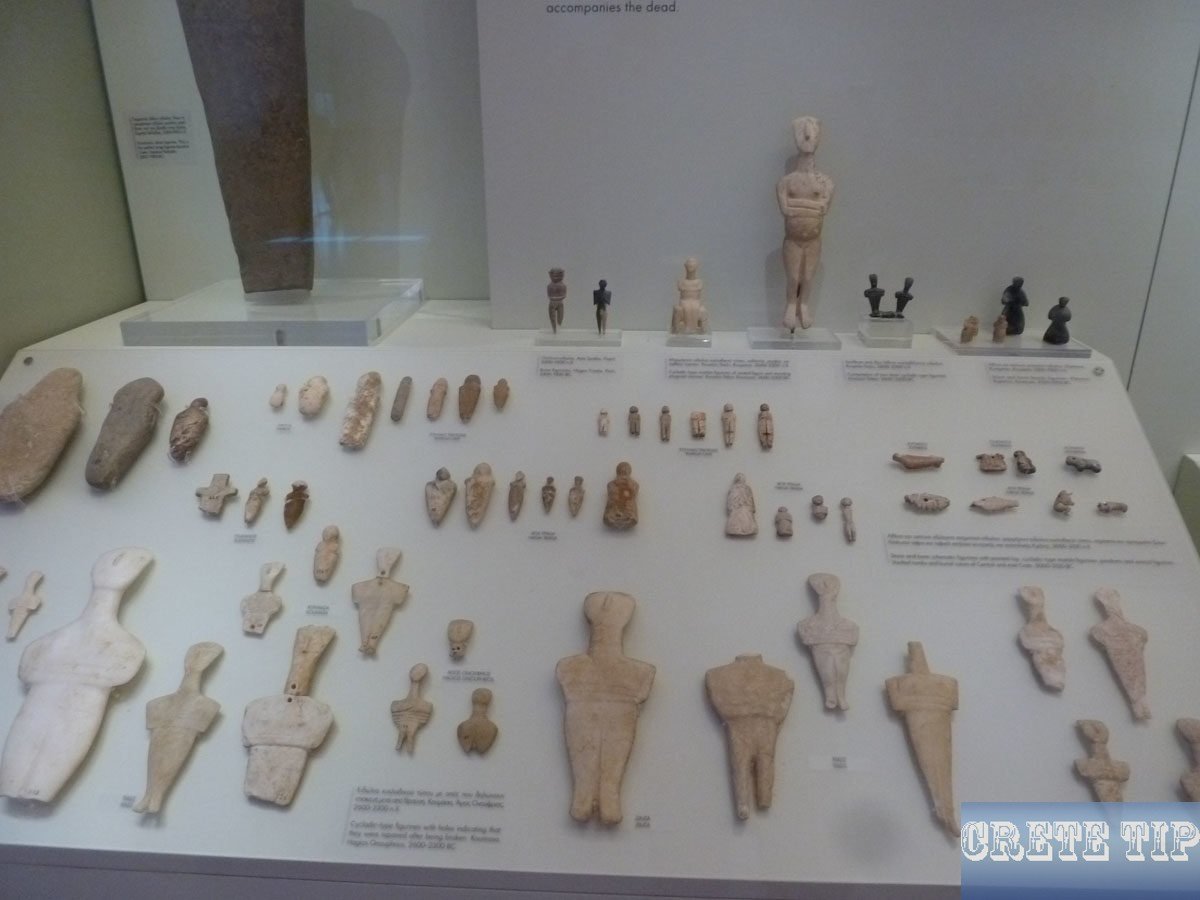
The profound changes that accompanied the introduction of metals led to an increase in trade, the establishment of relations with other territories and a change in social, political and religious life. New social classes such as sailors and merchants and even new professions emerged. This new order required directional leadership. Rulers were established who had to come from the most powerful families. At the same time the worship of the ‘Great Goddess’ (like the ‘goddess of fertility’ from Ierapetra) was systematized.


